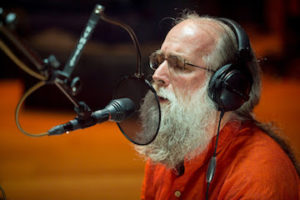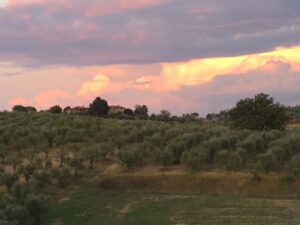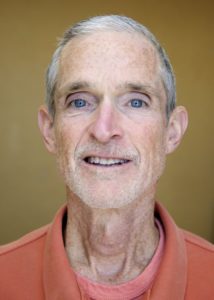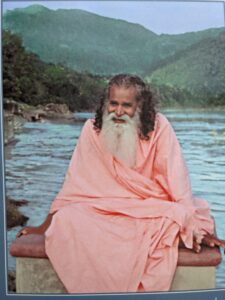The Inner Side of Chanting
by Acharya Mangalananda
Ah! The joy and the power of chanting the Divine Names! Chanting the sacred Names of God is a viable practice in every genuine spiritual Path. From the “La Ilaha illAllah” of the Sufis To the “Baruch ata Adonai” of Jewish mysticism to the Jesus Prayer of the Eastern Orthodox Church, all Traditions revere the revealed Names of the Divine and their inherent transformational power.
The practice of Yoga comes from the ancient Indian Tradition of Sanatana Dharma, commonly known as Hinduism. The very foundation of Sanatana Dharma is the inner revelation passed down from the ancient Rishis (Seers) who heard the Divine Mantras, or sound formulas, vibrating as the basis of the Universe. Beginning with the sacred “OM” sound, branching out into the eternal Gayatri Mantra and descending down into the invocative mantras calling forth all the varied forms and attributes of the one Brahman, or God, these mantras are used for meditation, purification, and invocation. Countless generations of perfected and realized Yogis and Siddhas testify to their efficacy in bringing inner awakening and healing and ultimately the revelation of the pure soul of humanity deeply buried in the human heart. The Saints have told us that the Name of God is God, the Divine revealing Itself as sound (“Shabda Brahman” – God as sound).
In our yogic practice, we use them inwardly in silent meditation, chanting them mentally and tuning them to the rhythm of the breath. Sometimes chants are intoned in a basic monotone, feeling the vibration of the voice. But the most joyous way of intoning mantras is the communal chanting of these Names set to music. This is called kirtan and has become a very popular genre of music worldwide in recent years. In this practice, the mantras are set to music, usually using the traditional ragas or scales of classical Indian music and sung in a call-and-response fashion, led by a competent musician. In this melodious and enjoyable chanting, the deep healing vibrations of each mantra are experienced, and this brings an inner joy, and occasionally even an ecstatic feeling which accounts for the popularity of the practice.
I have been practicing and performing kirtan for over 40 years and love it with all my heart. I have studied music in India and toured the world presenting kirtan events. Join me and my full kirtan band on March 13th for an evening of kirtan. Details HERE
Whether an experienced kirtan chanter, or totally new to the practice, please join us and experience the joy and upliftment of this ancient, yet eternally new and relevant practice.
Jai Ma!
 Acharya Mangalananda has learned by deep immersion the traditional spiritual music of India. His kirtan is couched in the mystical ragas of India and is full of the lively ecstatic joy of the Divine Names.
Acharya Mangalananda has learned by deep immersion the traditional spiritual music of India. His kirtan is couched in the mystical ragas of India and is full of the lively ecstatic joy of the Divine Names.
Mangalananda has toured extensively throughout India, Europe and the USA, presenting kirtan concerts, yoga classes and workshop retreats. He is an Acharya (an appointed Spiritual Teacher) of Ma Anandamayi Ashram in Omkareshwar / Indore in the lineage of Sri Anandamayi Ma.







